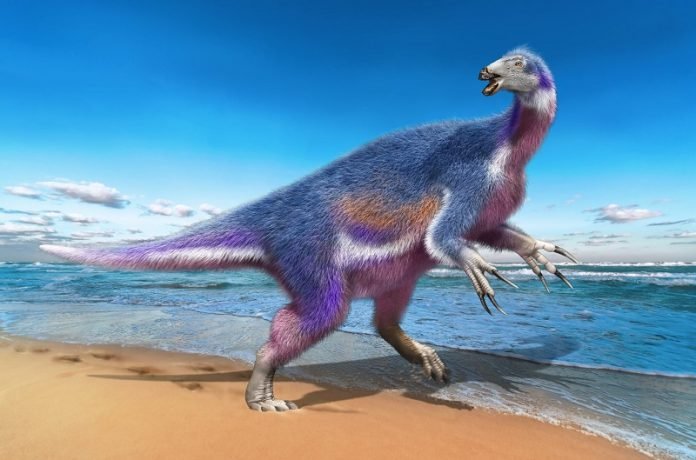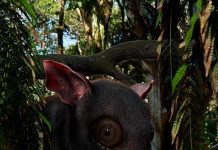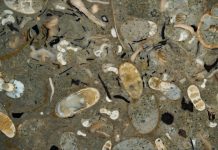
Scientists have described the youngest therizinosaur fossil from Japan and the first in Asia to have been found in marine sediments.
Therizinosaurs were a large group of primarily herbivorous theropod dinosaurs (dinosaurs with hollow bones and three-toed limbs).
Therizinosaurs were first discovered in Asia; the fossil records in Asian countries such as China and Mongolia are rich in therizinosaurus fossils, and fossil fragments have also been reported from Japan.
Scientists from Japan and the USA, led by Professor Yoshitsugu Kobayashi at the Hokkaido University Museum and Anthony R. Fiorillo at Southern Methodist University (SMU), have described a new species of therizinosaurid from Japan, and provide new insights into the function of therizinosaur claws.
The findings were published in the journal Scientific Reports.
The fossil described in this work consists of a partial vertebra and a partial wrist and forefoot, originally collected in 2008 from the Osoushinai Formation, a fossil-rich geological feature in Nakagawa, Hokkaido.
At the time, it was described as belonging to a manitoraptan dinosaur, and was believed to belong to a therizinosaur. However, the lack of comparative data at the time made confirmation impraticable.
The scientists decided to revisit the specimen as recent developments have led to a wealth of data that allow for the classification of therizinosaurs based on the morphology of the forefoot claws.
This specimen is the third therizinosaur from Japan; however, the first two have not yet been described.
Asian therizinosaurs existed from the Early to Late Cretaceous, and possessed enormous claws on their hands. Based on the morphology of these claws, which relates to their function, therizinosaurs are divided into basal therizinosaurs and derived therizinosaurs.
The claws of the new species of therinizosaur, Paralitherizinosaurus japonicus (reaper reptile by the sea from Japan), were compared with claws from many other therizinosaur species. Analysis of the data placed P. japonicus among the derived therizinosaurs based on four shared, derived characters.
An analysis of the morphology of the claws, including their length and shape of the base of the claws indicate that the claws of basal therizinosaurs are generalized and not for specific use, while the claws of derived therizinosaurs were specialised to hook and pull vegetation to the mouth for grazing.
Paralitherizinosaurus japonicus is the youngest occurrence of therizinosaur remains in Japan. Its discovery indicates that therizinosaurs in Asia existed over a much longer timescale, and a much larger geographical area, than previously known.
It is also the first therizinosaur record from marine sediments in Asia. Along with a fossil from Utah, USA, this suggests that some of the derived therizinosaurs were adapted to coastal environments.
“This study also tells us how much more we still have to learn about the incredible history of life on Earth,” said Fiorillo, a research professor in SMU’s Roy M. Huffington Department of Earth Sciences.



